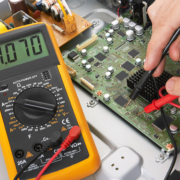Testing of electrical systems
Testing of electrical systems
Testing of electrical systems is essential for ensuring the safety of people and equipment. It is important to make sure that all the components are working correctly, so that problems can be identified and rectified before any serious damage is caused. Electrical testing involves a variety of techniques such as visual inspection, voltage measurements, power quality analysis and fault location tests. Testing should be done regularly in order to ensure safe operation of the system.
Testing of electrical systems is a crucial process to ensure that all components are operating at the proper levels of safety and efficiency. It involves testing components such as circuits, wiring, switches, and appliances to detect any potential problems. The testing process requires special tools and knowledge in order to accurately assess the system’s performance. This helps identify any issues with circuitry or wiring that could lead to a dangerous situation and allows for the necessary steps to be taken in order to rectify the issue. Additionally, it can help diagnose potential problems with components or appliances before they cause further damage or become a safety hazard. Testing electrical systems is an essential part of the engineering process. Developing a reliable and robust system requires rigorous testing to ensure that all components are functioning properly and safely. Testing also helps identify any potential failure modes before they arise in production. This article will discuss the different types of testing used for electrical systems, their use cases, and the benefits they can provide. Types of electrical testing Electrical testing can be divided into several categories. Each has a different purpose and uses a different type of test. Below are explanations for the most common types: Regression and ANOV. These are statistical tools that help you determine if there is a relationship between variables. This is helpful in determining the effects of treatments in an experiment, or identifying factors that may contribute to a regression line’s slope. Finite element analysis (FEA). This can be used to determine the strength and integrity of components or prototypes. It is also used for determining stress states, thermal performance, and material properties. For example, this analysis method can help quickly determine whether a connection at a point in an electrical circuit will lead to a short circuit. Impedance tests are used to characterize the electrical resistance of any device such as an electronic part, conductor material, or dielectric material. Testing these parameters ensures that they meet specifications. Applications The use cases for testing vary based on what aspect of testing is being undertaken.

